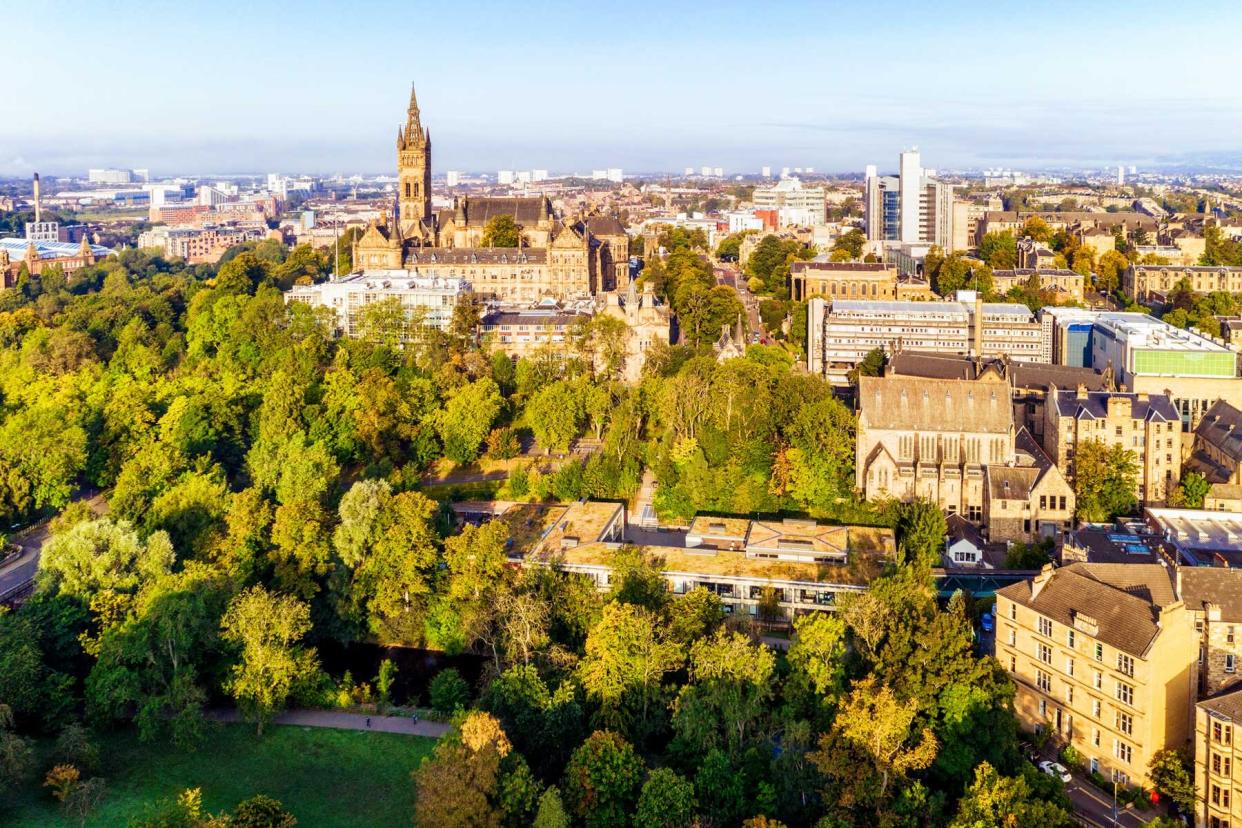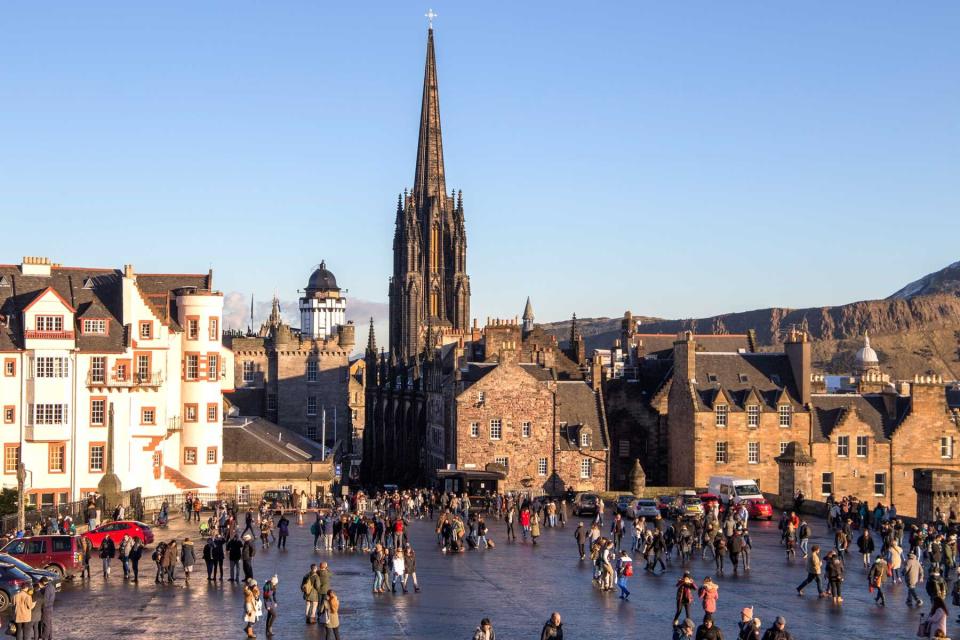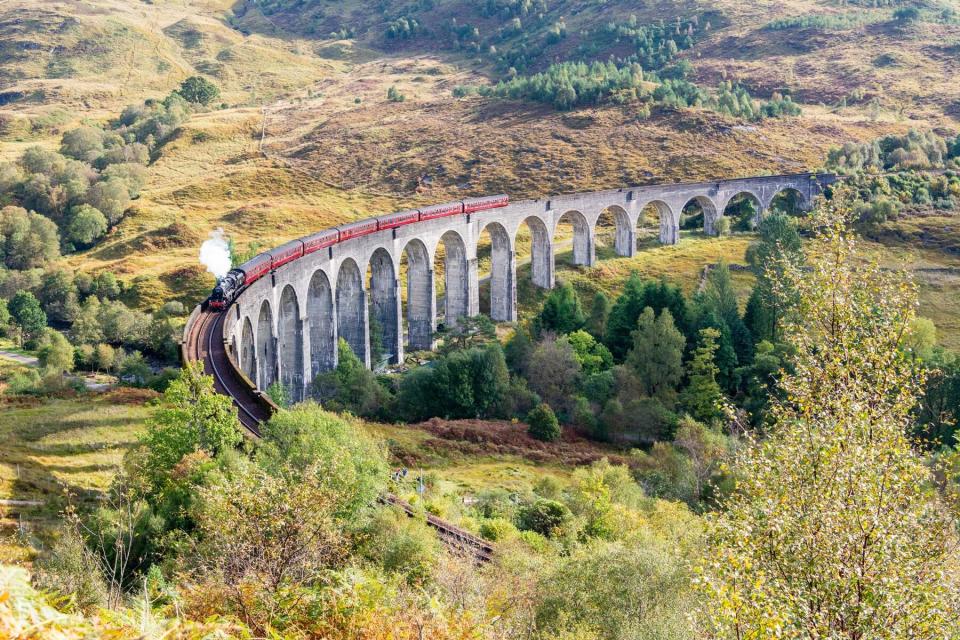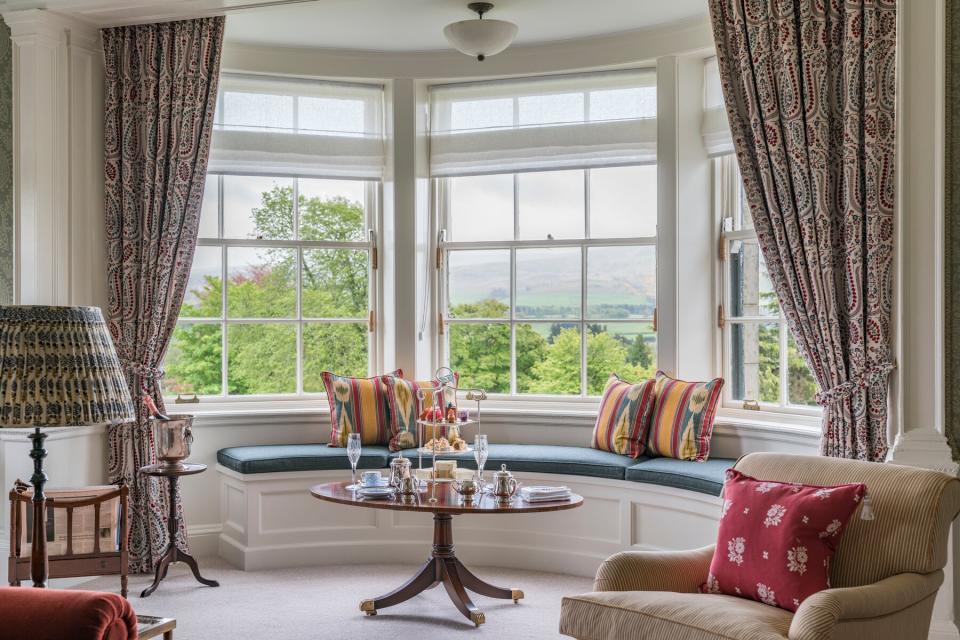Scotland Is Home to Fairy-tale Castles, Stunning Landscapes, and Charming Small Towns — How to Plan the Perfect Trip

Getty Images
With its stately castles, glass-like lochs, and voluptuous glens, Scotland has always been a showstopper. The country's magic extends from its quaint small towns to the snow-capped peaks of its romantic, rugged Highlands to its dynamic modern cities like Glasgow and Edinburgh. It's home to some of the best national parks in the U.K. and more than 900 offshore islands with extraordinary wildlife like regal red stags, majestic golden eagles, humpback whales, and massive salmon (not to mention the fabled inhabitant of Loch Ness, too).
The raw, poetic beauty of this ancient land — formerly known as Caledonia — is difficult to overstate. If you're hoping to head to the U.K.'s ravishing northern nation, read on for our guide to planning the perfect Scotland vacation.
Best Times to Go to Scotland
The bad news is that, like the rest of the U.K., Scotland's weather is far from reliable, even at the height of summer. But as long as you're prepared to accept that and pack a raincoat for the odd shower or two, then you'll be fine from May to September. The smart money is on visiting in June and the first two weeks of July, when Scotland basks in seemingly endless summer evenings (the sun doesn't set until 11 p.m. in some parts of the Highlands) and the British school holidays have not yet begun, so prices remain low.
For winter travelers, Scotland has the U.K.'s best ski resort at Cairngorm Mountain, while the capital, Edinburgh, hosts one of the world's biggest New Year's Eve parties, Hogmanay.
Best Things to Do in Scotland

Getty Images
If you like the great outdoors, you'll love Scotland. It's an ideal place for hiking, biking, and generally embracing the wildly beautiful landscape. You can summit magnificent Ben Nevis in a day (the tallest mountain in the U.K., at 4,413 feet), take a ferry out to explore the Hebrides archipelago and its stunning white-sand beaches, tour scores of castles, including the Queen's favorite holiday home, Balmoral (open to the public every April through July), and dive into a quirky food scene encompassing dishes like haggis (an offal and oatmeal combo, which tastes significantly better than it sounds), deep-fried mars bars, and juicy scallops, langoustines, and mussels.
Scotland is also a mecca for both golfers (St. Andrews Old Course is the headline act) and whisky lovers, with some of the world's best distilleries available to tour, including Johnnie Walker on Edinburgh's lively Princes Street, Glenlivet near pretty Ballindalloch, and the legendary Macallan on a sprawling country estate in nearby Aberlour.
If you enjoy driving, you'll find some of the U.K.'s emptiest, most dramatic roads here, too, (as driven by James Bond in "Skyfall"), including the latest official addition, the North Coast 500, an action-packed 500-mile route (516 to be exact) featuring mind-boggling coastal scenery, jaw-dropping beaches, rolling hillside, quaint fishing villages, and multiple hidden gems.
And if you prefer your challenges on foot, check out the magnificent West Highland Way, the country's best-loved long-distance walking route. Snaking its way from Milngavie to Fort William, it covers some of Scotland's finest scenery over 96 miles and is normally completed from south to north.

Ana del Castillo/Getty Images
Meanwhile, history buffs will also be agog on any visit to Scotland, thanks to its 3,000-plus castles (Castle Sween in Argyll is the oldest, dating back to the 1100s), as well as plenty to check out in the winding wynds (narrow lanes) and twisted staircases of Edinburgh's enchanting Old Town. (Edinburgh Castle, towering over the city, is arguably the grandest in the country, too.)
If you can, make time to visit Perth, the former Scottish capital where kings were crowned on the Stone of Destiny and infamous Glen Coe, a beautiful valley full of waterfalls and deer, also known for the brutal clan massacre of 1692 (which inspired the Red Wedding in George R. R. Martin's Game of Thrones).
Where are the Scottish Highlands — and what is the best way to get there?

Getty Images
The clue is in its name: the Highlands are the mountainous upper half of Scotland, covering 10,000 square miles of picturesque scenery. The region's lively capital is Inverness, which sits centrally and is a superb base from which to explore, while other highlights include mysterious, misty Loch Ness, majestic Cairngorms National Park, and idyllic Isle of Skye, which has been connected to the mainland via a road bridge since 1995.
The easiest way to reach the Highlands is to fly into Inverness Airport from London or elsewhere in the U.K., or rent a car and drive from Glasgow or Edinburgh. However, the way to arrive in style is on the Caledonian Sleeper train from London Euston, a chugging time machine where you can fall asleep to the sounds of black cabs and bustle of the British capital and wake up among the red deer and magical glens of the Highlands. Regularly nominated as one of the world's best train journeys, the scenery gets truly spectacular after Fort William, as the route skirts a dramatic chain of lochs before descending into lush glens and crossing the Glenfinnan Viaduct made famous by the Harry Potter films. For the ultimate Hogwarts experience, steam locomotives work this route during the summer months, so check in advance for these special departures.
Where to Stay in Scotland

Courtesy of Gleneagles Hotel
The major cities have an abundance of hotels for every budget, headlined by Glasgow's Kimpton Blythswood Square, a boutique property in the former headquarters of the Royal Scottish Automobile Club, and The Dunstane Houses in Edinburgh, a pair of beautifully renovated 19th-century townhouses.
Scotland arguably does traditional country house hotels and rustic lodges better than anywhere else in the world, with Fife Arms in Braemar and Gleneagles in Perthshire being particular treats (the latter, nicknamed the "Glorious Playground" boasts three championship golf courses, its own dedicated train station, and the only restaurant in the country with two Michelin stars).
Scotland is, of course, peppered with castles, and many have been converted into hotels and B&Bs in recent years, with some of the better fortified accommodation options including Glenapp Castle in Ayrshire, Inverlochy Castle in Fort William, Atholl Palace Hotel in Pitlochry, and Stonefield Castle Hotel on Loch Fyne.
Wherever you stay, you'll get a warm welcome — not to mention a hot bowl of Scottish porridge or a plate of bacon, eggs, and haggis to start the day in a spectacularly scenic country.

